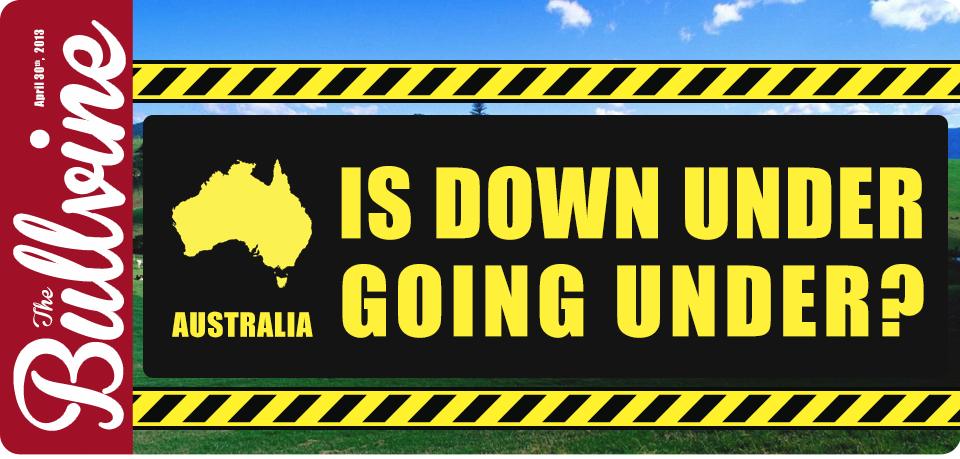Dairy producers around the world can be forgiven for having a romanticized vision of producers in Australia. We imagine that, like the country, the industry is big, bold and populated by the friendliest people you could ever meet. Well, that`s the story. But unfortunately our peer group is finding it impossible to stick with it! Headlines report that a full blown “Crisis” is turning things upside down with “Massive job losses!” and “Rural Debt Approaching $60 Billion” It is hard to imagine what they’re going through. However, it isn’t only financial strife that is hitting that usually Teflon group known as Aussie dairy farmers. The downturn has gone on so long that it is spreading beyond the farm. Many rural towns that rely on farm dollars are closing businesses because of the financial impact. Banks are closing down on lending. It’s dire straits for everybody. In the long term it doesn’t look any better. ABARES (Australian Bureau of Agricultural and Resource Economics and Sciences) forecasts a 36 cents per litre farm-gate price within five years – well below the cost of production. For many families who make up the backbone of Australia’s third biggest agricultural industry, the threat of going under has turned from “it will never happen” to “it could happen soon”!
Quit or Lose Everything?
Yes! Although renowned for their warmth and informality and universal love for their country, today’s Australian dairy farmer is facing serious challenges. It is estimated that 20 per cent of south-west Victorian dairy farmers are potentially in great trouble with the banks. The current 6,700 dairy farmers in Australia is a number that is down considerably from 12,000 a decade ago. And instead of enjoying productivity and success even fourth generation dairy farmers are on shaky ground and seeking options before it’s too late. For many that time is here. “There comes a time when you’ve got to stop. That’s why we’re getting out because I don’t want to walk away with nothing.” Year after year of losses have affected what options they face in leaving too. Those who have clung desperately to their dairy operations are finding it next to impossible to sell, especially in the last two years. There are hundreds of dairy farms for sale in south-west Victoria. Unfortunately there are very few buyers. Farmers who previously expect up to $7000 an acre are struggling to get offers of $4000 or $5000. On the sale of an entire farm that could mean a million dollars less after years of dedication and hard work.
Dollars and Senselessness
From the outside looking in, we would love to identify what caused this situation in Australia and, hopefully, guarantee that our own national industry, wherever we’re from, isn’t on the same path. However, the causes of Australia’s crisis are eerily familiar:
- Milk prices are NOT rising.
- Input costs – electricity, fuel, wages, feed and water – ARE rising.
- Investments were made that look foolish in hindsight.
- New policies and new taxes add new burdens.
- Not heeding #’s 1 to 4.
… C.O.P.s and Robbers
Two variables have had particularly unpleasant repercussions in Australia. Dairy farmers are usually resilient and cope with Cost of Production challenges with belt-tightening and management methods that have seen them through the regular up and down cycles of the dairy industry. However, COP creativity can’t make a stand against the highway robbery that appears to be happening in Australian grocery store aisles. Press releases report that “At the moment the milk price we’ve been getting is 25 or 26 cents a litre. The cost of production does vary from farm to farm, but for us it’s around 43 cents a litre.” As if that wasn’t disheartening enough, the strong Aussie dollar (and who doesn’t want a strong national currency) is severely weakening the dairy industry. But the blows just keep on coming.

Coles says the milk war is not to blame for lower prices.
Milk Wars
Dairy producers worldwide face country specific challenges. Even so the battle between two parts of the same industry is disconcerting for Australian producers. “Two years ago Coles discounted its home brand milk to $1 a litre. Its decision sparked a milk war as the other supermarket chains followed suit. This has driven down the farm gate milk price. Coles argues the milk war is not to blame and has undertaken an advertising campaign to put a better spin on their role. Dairy Farmers president Noel Campbell replies, “Part of the reason why people are so angry with the Coles situation is, whether you supply domestic or the export market, people think milk being sold for $1 a litre is just wrong. “The amount of capital expended on the farm,. The amount of labour expended on the farm, long hours etcetera, people just see it as a slap in the face.”
Seeking Solutions
When milk is cheaper than water, a universal cry is raised, “Help!” Some Australian groups turn to the government. “The government should appeal to the consumer to support our local dairy industry and the additional 50 cents per litre would be distributed direct to each farm by way of 12 cents per liter and would keep this quality product on our supermarket shelves,” Coffey Hunt On-Farm Agribusiness partner Garry Smith said. “We need to get more money paid for our milk and continue to reduce our costs and inputs.” Good suggestions but another hurdle is thrown up since there have been savage cuts to agricultural R&D right around the country. Places to seek innovative solutions and leadership are running out. Farmers are understandably agitating for low interest or no interest loans to help them through until prices improve. One suggestion is that there could be a consumer-paid 50-cents-a-litre Dairy Industry Support Initiative on milk.
Is Today’s Crisis Tomorrow’s Disaster?
Wherever they are, but most especially in Australia, farmers need to start thinking about the big picture beyond the farm gate. Failure to face the future could mean that the opportunity to build a sustainable industry is lost. Profitability is the goal. We need to stop internal competition and fighting before the entire industry is lost.
The Bullvine Bottom Line – Who’s Next?
The milk industry is volatile and affected by many variables. That’s not new but now there is a new world order of dairying nations. Everyone – perhaps foolishly – buys into the story of a glowing future where demand soars and there is a wealthy future for dairy farmers. Unfortunately here and now Australian dairy farmers must face the reality that they are no more profitable now than they were a decade ago. Something needs to change or the down under romantic story will become the down under dairy industry tragedy.
Get original “Bullvine” content sent straight to your email inbox for free.


















Leave a Reply
You must be logged in to post a comment.